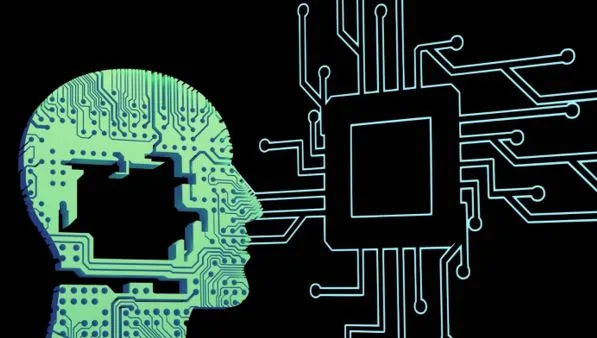Which Is the Best AI Detector for Academic Writing: StudyAgent vs. Alternatives?
The rapid evolution of artificial intelligence has introduced a new paradigm in academic writing. While AI tools offer immense potential for brainstorming and initial drafting, their misuse raises significant concerns about academic integrity. Universities and instructors are increasingly relying on AI detection software to ensure student work is a product of their own effort and learning.
For students, navigating this new landscape means not only understanding how to use AI responsibly but also knowing which tools can help them verify the originality of their own work. The question then becomes: Which AI detector is best for academic writing? This comprehensive guide will explore StudyAgent and five other leading AI detection tools, detailing their functionalities, features, and unique strengths to help you make an informed choice.
The New Academic Imperative: Why AI Detection Matters
The rise of sophisticated AI writing tools has fundamentally shifted the conversation around academic integrity, making AI detection an increasingly integral part of the educational landscape. The core issue is one of authenticity and originality. Educational institutions need to ensure that the work submitted for assessment genuinely originates from the student, as this is the foundation of the entire learning and evaluation process.
AI detectors also serve as a crucial deterrent against misuse. Knowing that AI-generated content can be identified encourages students to use AI tools responsibly, like for brainstorming or editing, rather than for wholesale generation of assignments. Finally, these tools are becoming essential for maintaining academic standards and fairness, allowing instructors to accurately assess a student’s grasp of the material. As AI technology continues to advance, AI detection is becoming a necessary “new normal” to preserve the core tenets of academic integrity.
What AI Detectors Actually Look For
While the technology behind AI detectors is complex, the “telltale signs” they search for are quite logical. These tools are trained to spot the subtle but consistent differences between human and machine writing. Understanding what they’re looking for can not only help you choose a tool but also make you a more critical reader of AI-generated text.
Different detectors prioritize different signals, but most analyze a combination of core linguistic and structural patterns. Here’s a breakdown of the primary “digital fingerprints” that these tools are designed to identify:
| Fingerprint Type | What It Means | Why It Signals AI | Example |
| Low Perplexity | The text is highly predictable. | AI models are trained to choose the most statistically likely next word, avoiding creative or unusual phrasing. | Using “large” instead of “vast,” “immense,” or “gargantuan.” |
| Low Burstiness | Sentence length and structure are very uniform. | Humans write in bursts of short and long sentences. AI often produces text with a monotonous, even rhythm. | A paragraph where every sentence is between 15 and 20 words long. |
| Generic Phrasing | Overuse of standard transitions and clichés. | AI falls back on common phrases from its training data, lacking a unique authorial voice. | Starting sentences with “Furthermore,” “In addition,” or “It is important to note.” |
| Factual Hallucinations | The text contains confident-sounding but incorrect information. | AI does not “know” facts; it predicts patterns, which can lead it to invent plausible-sounding but false data or sources. | Citing a non-existent research paper or an incorrect date for a historical event. |
A Close Look at the Top 6 AI Detection Tools
- StudyAgent: The Integrated Academic Hub
StudyAgent is an all-in-one academic platform built to streamline the entire student writing process, from outlining and drafting to final revisions. One of the key components of its toolset is a sophisticated AI detector, which is fully integrated alongside its AI writer, paraphraser, and plagiarism checker. This unique structure allows students not only to create and refine their work efficiently but also to instantly verify its originality within the same environment. By combining powerful content creation features with robust detection capabilities, StudyAgent provides a comprehensive solution for producing high-quality, authentic academic work.
How It Works and Key Features
StudyAgent AI detector analyzes submitted text for patterns, perplexity, and burstiness that are characteristic of AI-generated content. This is integrated directly into the platform, so after you write or paraphrase, you can immediately run a check for both plagiarism and AI detection.
- All-in-one workflow – It combines context-aware AI writing, plagiarism and AI detection, structured outlining, and advanced paraphrasing in one place.
- Student-centric design – The interface and features are built specifically for the challenges and rhythms of academic life.
- Focus on integrity – The dual detection capability offers robust support for ensuring your work is original before submission.
The Verdict for Students
For students seeking a comprehensive platform that supports the entire writing process, StudyAgent is a powerful contender. Its integrated nature is its biggest advantage, saving time and improving organization. While it is still in beta, its core features are currently offered for free, making it an incredibly accessible and valuable tool for students who want a single hub for all their academic writing needs.
- Winston AI: The High-Accuracy Specialist
Winston AI has established itself as a dedicated AI content detection tool with a reputation for high accuracy. It is designed for a broad audience, including educators and professional writers, who need a reliable, no-frills solution for identifying AI-generated text. Its primary mission is singular: to provide a clear, trustworthy, and accurate verdict on a text’s origin, without unnecessary complexity or distractions.
How It Works and Key Features
The platform uses advanced machine learning algorithms to analyze text for linguistic patterns and structures common in AI writing. Users simply paste their text, and Winston AI quickly provides a probability score, highlighting specific sentences that are most likely AI-generated. This detailed, sentence-level analysis is particularly useful for pinpointing specific areas that need revision or further scrutiny from an editor.
The Verdict for Purists
Winston AI is an excellent choice for users who want one thing: an accurate AI detector. It doesn’t have the integrated writing aids of a platform like StudyAgent, and its free trial is quite limited. However, for educators or students who need a powerful, dedicated second opinion on a piece of text, its strong reputation for accuracy makes its subscription (starting around $12/month) a very worthwhile investment.
- GPTZero: The Academic Original
GPTZero was one of the first AI detectors to gain widespread attention, having been developed by a student specifically to help educators identify AI-written text. This unique academic origin story continues to inform its user-focused design and core mission, making it a popular and trusted choice in educational settings around the world, particularly in higher education.
How It Works and Key Features
GPTZero’s methodology is famously built on analyzing “perplexity” (predictability) and “burstiness” (sentence variation) in the provided text. It provides a clear prediction of human vs. AI origin and highlights sentences that are most likely machine-generated. Its features are specifically tailored for the classroom, including the ability to upload various document types and scan multiple files at once.
The Verdict for Educators and Quick Checks
GPTZero remains a highly relevant tool, especially for educators who appreciate its straightforward approach and academic focus. Its accessible free tier also makes it a great starting point for students who want to run a quick check on a paragraph or a short assignment. While it lacks the broader feature set of other platforms, its focused approach and strong academic roots make it a trusted name.
- Copyleaks: The Comprehensive Security Tool
Copyleaks is a professional-grade platform that offers a powerful suite of tools for both AI detection and traditional plagiarism checking. It caters to a wide range of users, from academic institutions to enterprise clients, and is known for its robust, multi-layered approach to content integrity.
How It Works and Key Features
Copyleaks uses its own advanced AI to analyze text for patterns indicative of machine authorship from a wide variety of LLMs, not just one. This AI detector is bundled with an equally powerful plagiarism checker, providing a two-in-one solution for verifying originality.
- Dual functionality – It provides both AI content detection and in-depth plagiarism checking.
- Multi-language support – Its detection capabilities are not limited to English, which is a significant advantage for international institutions.
- Full site scanner – It can scan entire websites for AI-generated content, a feature useful for publishers.
- API integration – It offers an API for developers to integrate its services into their own learning management systems or platforms.
The Verdict for Institutional Power
Copyleaks is a feature-rich and powerful tool. For an individual student, its complexity and credit-based pricing (starting around $9.99 for a block of credits) might be more than what is needed for a single essay. However, for institutions or power users who require a comprehensive, multi-language solution for both AI and plagiarism, it is one of the top contenders on the market.
- Originality.AI: The SEO and Content Professional’s Choice
Originality.AI has built a strong reputation, particularly among SEO professionals and content publishers, for its aggressive and highly accurate AI detection algorithm. While its primary marketing is geared toward professionals, its power and precision are highly relevant for academics who demand only the most stringent and reliable checks for their research and writing projects.
How It Works and Key Features
The platform employs a sophisticated algorithm trained on vast datasets to provide a percentage score indicating the likelihood of AI origin. Like Copyleaks, it also includes a robust plagiarism checker for comprehensive analysis. It is built for users who are analyzing content at scale, with useful features like a Chrome extension for on-the-fly checks and the ability to scan entire websites.
The Verdict for High-Volume Creators
Originality.AI is a top-tier detector known for its accuracy and dual functionality. Its pay-as-you-go credit system can be cost-effective for users with varying needs, but may be less predictable than a subscription for a student checking multiple drafts. For academics who want a professional-grade tool that is known for being tough to fool, Originality.AI is an excellent choice.
- Scribbr AI Detector: The High-Stakes Submission Guardian
Scribbr, a well-known academic service provider, offers a dedicated AI Detector that is specifically tailored for students and researchers. Its biggest selling point, and a major source of its credibility, is that it is powered by Turnitin’s industry-leading technology, which is the same software used by many universities.
How It Works and Key Features
Scribbr’s detector analyzes text using Turnitin’s powerful engine, which identifies linguistic patterns and structures characteristic of LLMs. It provides a simple percentage score and highlights suspected sections. Crucially, Scribbr guarantees that any paper you submit for a check is not stored in any public database, ensuring your privacy and preventing issues with self-plagiarism when you later submit the paper.
The Verdict for Final Draft Confidence
For a final, high-stakes check of a thesis, dissertation, or major research paper, Scribbr is arguably the gold standard for students. The pay-per-paper model (around $10-$30 depending on length) may not be ideal for frequent checks, but the peace of mind that comes from using a Turnitin-powered engine with a privacy guarantee is invaluable.
The Human Factor: Navigating False Positives and Ethical Use
While AI detectors are powerful, it is crucial to recognize that they are not infallible. No algorithm is 100% accurate, which leads to the significant ethical challenge of the “false positive,” when a student’s original, human-written work is incorrectly flagged as AI-generated. This can happen for various reasons, including writing styles that are highly formal or formulaic, or prose from non-native English speakers that may share certain patterns with AI-generated text.
Because of this risk, an AI detection score should never be the sole basis for an accusation of academic misconduct. For educators, the score should be treated as a red flag that prompts further investigation, not as definitive proof of wrongdoing.
Ultimately, the most ethical use of an AI detector is as a tool for educational conversation. A high AI score can be a valuable opportunity to discuss the student’s writing process, their understanding of the source material, and the university’s policies on academic integrity. This shifts the detector’s role from a purely punitive device to a powerful teaching moment, reinforcing the importance of authentic, human-driven work.
Conclusion
The landscape of AI detection for academic writing is dynamic and constantly evolving. As this guide has shown, there is no single “best” tool, but rather a spectrum of specialized solutions designed for different needs, from all-in-one academic platforms like StudyAgent to high-stakes final checkers like Scribbr. The most effective approach is to choose the detector that best aligns with your specific task and budget.
Regardless of which tool you use, your strategy should be guided by a few core principles. Remember that these are aids for your own critical judgment, not a replacement for it.
- Match the tool to the task – Use a comprehensive suite for daily work or a high-stakes checker for a final thesis.
- Treat the score as a guide, not a verdict – See the percentage as a red flag that warrants a closer look, not as definitive proof of wrongdoing.
- Understand the limitations – Be aware that no detector is perfect and that false positives can occur.
- Prioritize your own integrity – The ultimate goal is to learn and submit your own authentic work, using these tools to verify, not to deceive.
Ultimately, the responsibility for producing original, human-written work always rests with the student. By using AI detectors wisely, you can not only protect your academic integrity but also learn more about the nuances that make your own writing voice unique and valuable.







